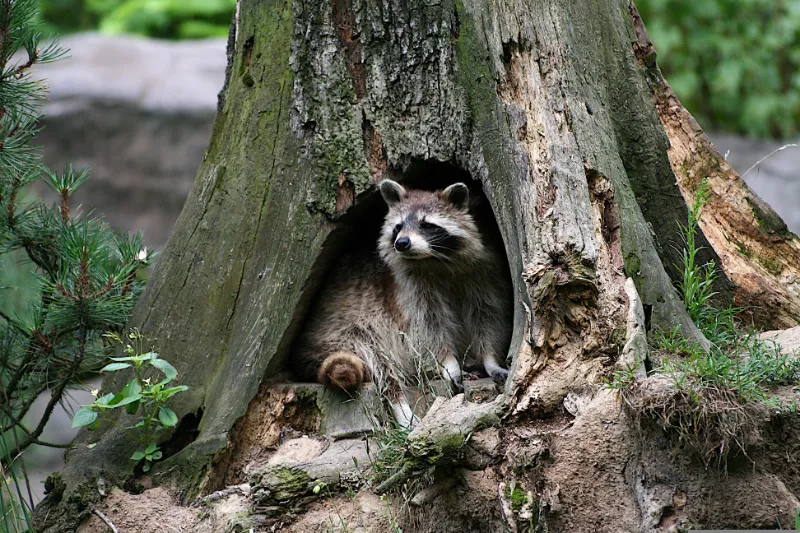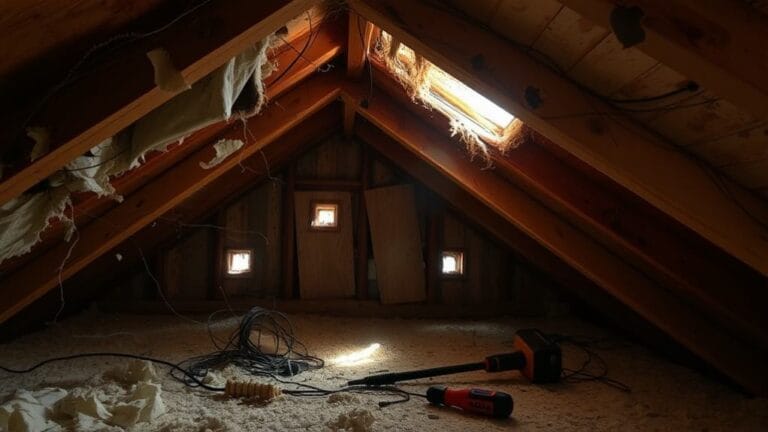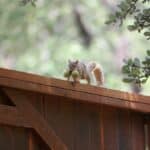Have you ever wondered where raccoons live? It turns out that these adorable creatures are very resourceful and often make their homes in trees!
In this blog post, we’ll explore the various types of trees raccoons use for nesting and how to identify them.
So read on to learn more about these fantastic animals and their unique habitats!
What is a Raccoon?
Table of Contents
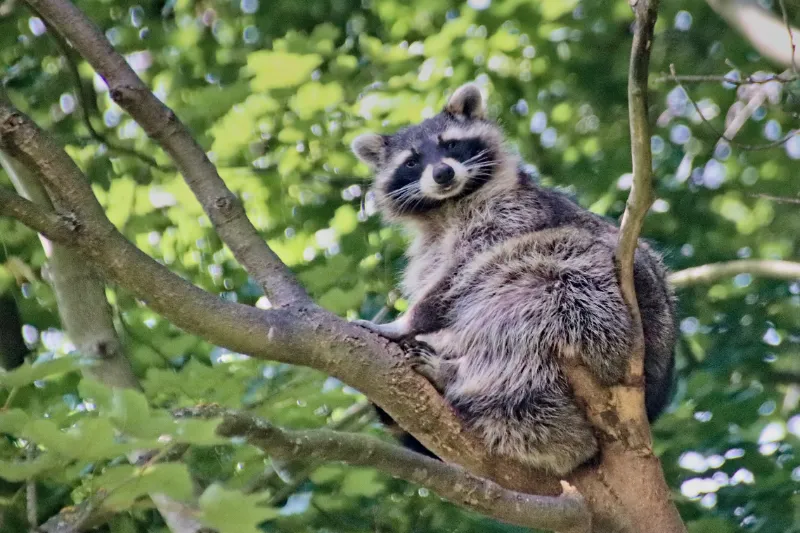
Raccoons are one of the most intelligent animals in the wild.
These clever creatures are native to North and Central America and are easily recognizable for their black mask-like fur markings, pointed ears, and bushy tails.
Raccoons have extraordinary problem-solving abilities, making them adept at finding food sources and building homes.
In addition to being extremely cunning, raccoons are also highly adaptable, living in various habitats, from woodlands to urban areas.
Their diet consists primarily of fruits, nuts, insects, and small animals. Raccoons are nocturnal creatures, so they can usually be seen foraging for food at night or sleeping in their nests during the day.
Where Do Raccoons Make Their Nests?
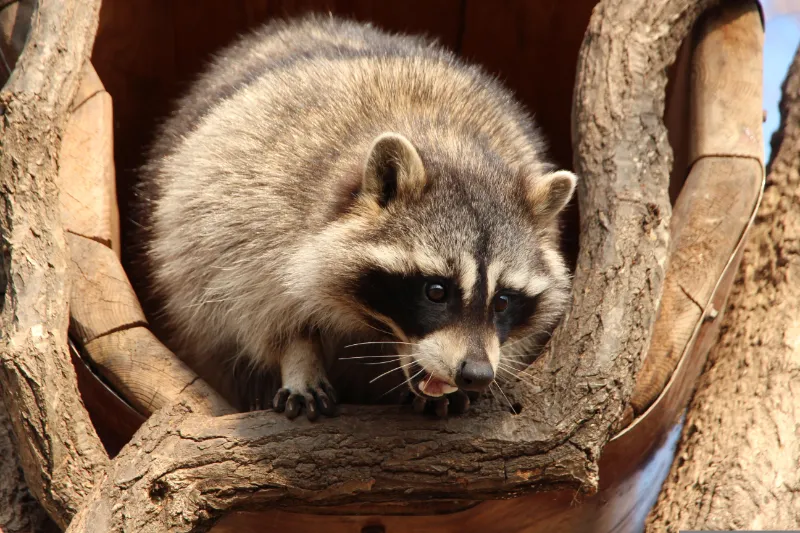
Raccoons are highly adaptable creatures with no shortage of places to make their nests.
In the wild, they will build nests in hollowed-out trees, in the crux of branches, in leaf piles near trees, in fallen trees, and in firewood.
In the urban setting, raccoons can build their nest anywhere from an abandoned vehicle, chimney, crawl space, attic, or any protected location they can access.
Tree hollows are some of the raccoon’s favorite denning sites, providing shelter from predators and the elements.
Finding a raccoon’s nest inside a tree cavity or burrow is common. Raccoons also use artificial structures such as sheds, porches, and garages to building their nests.
While it may be tempting to let them stay put, it is essential to remember that these animals can bring several health risks and damage property.
What is a raccoon’s nest made of?
Raccoons do not build nests like birds or squirrels, but they use existing shelter spaces.
To make their dens more comfortable, raccoons use leaves, wheat grass, goat grass, and haystacks to line their hole and create a nest.
During winter, when they are inactive, they may also use hollowed-out tree trunks, burrows in the ground, or firewood to build their dens. Some of these den sites may be challenging to access for humans.
Why Do Raccoons Climb Trees?
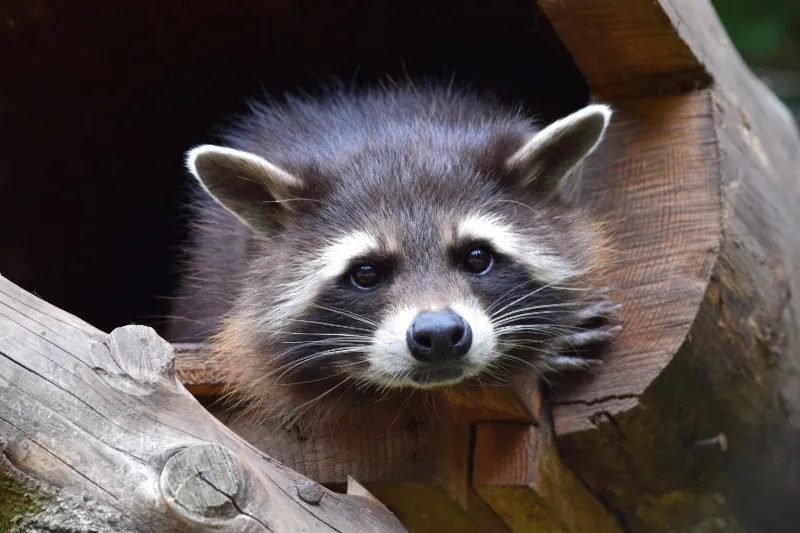
Raccoons are excellent climbers and have many reasons for scaling trees. Searching for food, escaping danger, or simply enjoying the experience are all common motivations for them to climb.
Trees also provide a great lookout, allowing the animals to survey their surroundings safely from above.
Additionally, tree hollows and other structures on the trunk offer a safe denning site away from predators and the elements.
Furthermore, trees can be great places for raising young, as they provide a secure environment that is out of reach of most predators.
Do Raccoons Sleep in Trees?
Yes, raccoons do sleep in trees! Tree hollows are some of the animals’ favorite denning sites, providing shelter from predators and the elements. Raccoons also nest in abandoned urban settlements and hollowed-out logs.
While they can have multiple nests at once, they prefer to sleep in larger holes in the trees or the hollow parts of fallen logs.
Property owners should be cautious when dealing with raccoons nesting near their homes, as they can be dangerous to humans.
How Many Nests Do Raccoons Make?
Raccoons are incredibly adaptable creatures and often have multiple nests in different locations.
They typically make one nest for sleeping and another for raising their young. They also have been known to have various nests in trees so they can move around and access food more efficiently.
Raccoons are also known to make dens in abandoned burrows, natural caves and crevices, tree cavities, and even human dwellings.
While it may seem like one raccoon could fill an entire tree with nests, they usually keep it to two or three, depending on the size of the tree.
It is important to remember that while a raccoon may make multiple nests, they usually only sleep in one at a time.
When Are Raccoons Most Active?
When it comes to when raccoons are most active, the answer is mostly at night.
Raccoons are nocturnal creatures, so they spend most of their day sleeping and resting in their dens.
- During the summer, spring, and autumn, raccoons are most active, as this is when their nesting season begins.
- During these months, you may find them climbing up a tree to find a safe spot to rest during the day.
Is a Raccoon’s Nest Dangerous to Humans?
Awareness of the potential danger a raccoon’s nest can pose to humans is essential.
Raccoons can transmit rabies, raccoon roundworm, and giardia through their urine, droppings, hair, mites, and ticks.
They are also known to venture inside homes and ransack pantries.
Raccoons have sharp claws and powerful jaws, which can harm your pets or damage property if you let them get too close to your house. The only way to protect yourself from these risks is by keeping raccoons away from where you live.
This can be done by removing potential food sources such as pet food and garbage, trimming tree branches near your house that could provide access to the roof, and installing fences or other barriers around your property.
You can also try using a raccoon-repellent light, which flashes a colored beam, or a repellent made of aromatic materials such as ammonia, spices, and vinegar.
Make sure to bring pet food in sealed containers to prevent attracting raccoons to your home.
Conclusion
In conclusion, raccoons are no strangers to trees. They often make their nests in hollow trees, underneath them, or in crevices of the tree.
This is not done as a result of being arboreal animals but rather out of necessity, as they often use these places to hide from predators and find sustenance.
It is important to remember that while raccoons’ nests can be a nuisance, there are ways to keep them away from your home.

